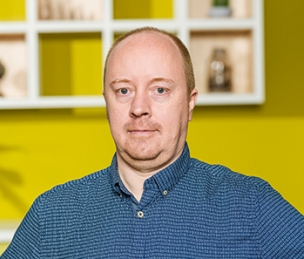Displaying 1 - 4 of 4
-
Van den Heuvel, H., Oostdijk, N., Rowland, C. F., & Trilsbeek, P. (2020). The CLARIN Knowledge Centre for Atypical Communication Expertise. In N. Calzolari, F. Béchet, P. Blache, K. Choukri, C. Cieri, T. Declerck, S. Goggi, H. Isahara, B. Maegaard, J. Mariani, H. Mazo, A. Moreno, J. Odijk, & S. Piperidis (
Eds. ), Proceedings of the 12th Language Resources and Evaluation Conference (LREC 2020) (pp. 3312-3316). Marseille, France: European Language Resources Association.Abstract
This paper introduces a new CLARIN Knowledge Center which is the K-Centre for Atypical Communication Expertise (ACE for short) which has been established at the Centre for Language and Speech Technology (CLST) at Radboud University. Atypical communication is an umbrella term used here to denote language use by second language learners, people with language disorders or those suffering from language disabilities, but also more broadly by bilinguals and users of sign languages. It involves multiple modalities (text, speech, sign, gesture) and encompasses different developmental stages. ACE closely collaborates with The Language Archive (TLA) at the Max Planck Institute for Psycholinguistics in order to safeguard GDPR-compliant data storage and access. We explain the mission of ACE and show its potential on a number of showcases and a use case. -
Trilsbeek, P., & Wittenburg, P. (2007). "Los acervos lingüísticos digitales y sus desafíos". In J. Haviland, & F. Farfán (
Eds. ), Bases de la documentacíon lingüística (pp. 359-385). Mexico: Instituto Nacional de Lenguas Indígenas.Abstract
This chapter describes the challenges that modern digital language archives are faced with. One essential aspect of such an archive is to have a rich metadata catalog such that the archived resources can be easily discovered. The challenge of the archive is to obtain these rich metadata descriptions from the depositors without creating too much overhead for them. The rapid changes in storage technology, file formats and encoding standards make it difficult to build a long-lasting repository, therefore archives need to be set up in such a way that a straightforward and automated migration process to newer technology is possible whenever certain technology becomes obsolete. Other problems arise from the fact that there are many different groups of users of the archive, each of them with their own specific expectations and demands. Often conflicts exist between the requirements for different purposes of the archive, e.g. between long-term preservation of the data versus direct access to the resources via the web. The task of the archive is to come up with a technical solution that works well for most usage scenarios. -
Broeder, D., Claus, A., Offenga, F., Skiba, R., Trilsbeek, P., & Wittenburg, P. (2006). LAMUS: The Language Archive Management and Upload System. In Proceedings of the 5th International Conference on Language Resources and Evaluation (LREC 2006) (pp. 2291-2294).
-
Trilsbeek, P., & Wittenburg, P. (2005). Archiving challenges. In J. Gippert, N. Himmelmann, & U. Mosel (
Eds. ), Essentials of language documentation (pp. 311-335). Berlin: Mouton de Gruyter.

Share this page